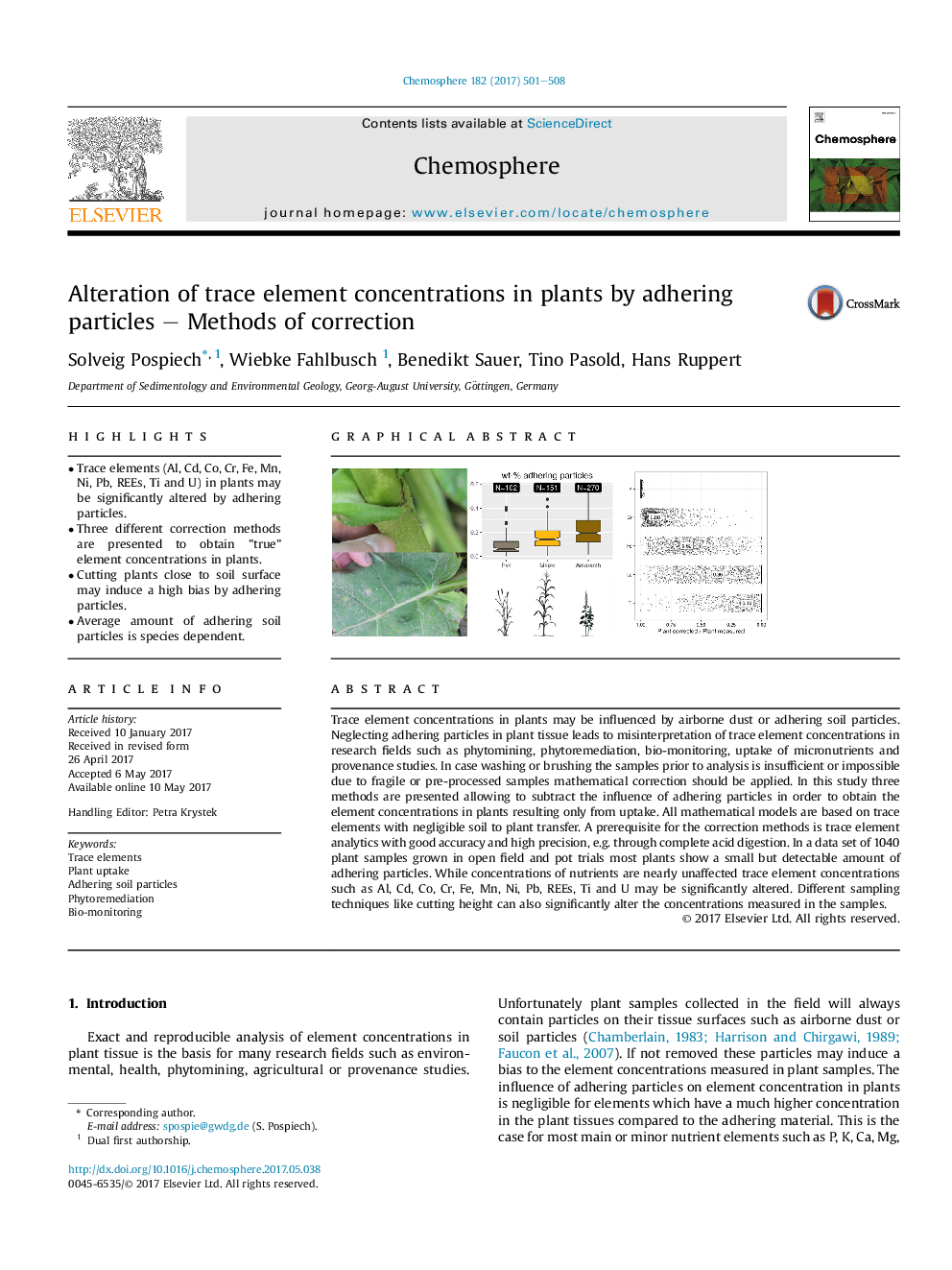| کد مقاله | کد نشریه | سال انتشار | مقاله انگلیسی | نسخه تمام متن |
|---|---|---|---|---|
| 5746890 | 1618789 | 2017 | 8 صفحه PDF | دانلود رایگان |

- Trace elements (Al, Cd, Co, Cr, Fe, Mn, Ni, Pb, REEs, Ti and U) in plants may be significantly altered by adhering particles.
- Three different correction methods are presented to obtain ”true” element concentrations in plants.
- Cutting plants close to soil surface may induce a high bias by adhering particles.
- Average amount of adhering soil particles is species dependent.
Trace element concentrations in plants may be influenced by airborne dust or adhering soil particles. Neglecting adhering particles in plant tissue leads to misinterpretation of trace element concentrations in research fields such as phytomining, phytoremediation, bio-monitoring, uptake of micronutrients and provenance studies. In case washing or brushing the samples prior to analysis is insufficient or impossible due to fragile or pre-processed samples mathematical correction should be applied. In this study three methods are presented allowing to subtract the influence of adhering particles in order to obtain the element concentrations in plants resulting only from uptake. All mathematical models are based on trace elements with negligible soil to plant transfer. A prerequisite for the correction methods is trace element analytics with good accuracy and high precision, e.g. through complete acid digestion. In a data set of 1040 plant samples grown in open field and pot trials most plants show a small but detectable amount of adhering particles. While concentrations of nutrients are nearly unaffected trace element concentrations such as Al, Cd, Co, Cr, Fe, Mn, Ni, Pb, REEs, Ti and U may be significantly altered. Different sampling techniques like cutting height can also significantly alter the concentrations measured in the samples.
350
Journal: Chemosphere - Volume 182, September 2017, Pages 501-508